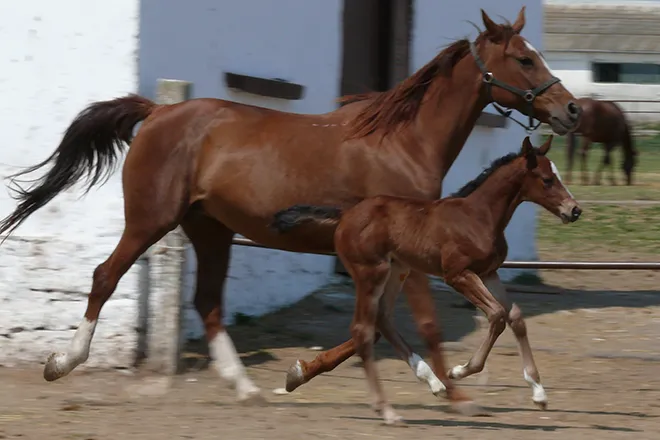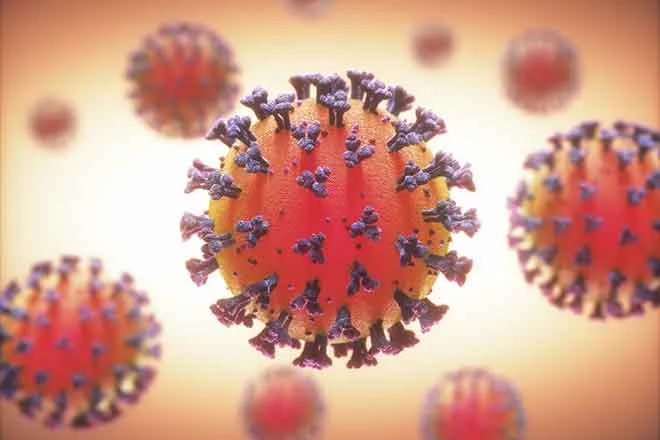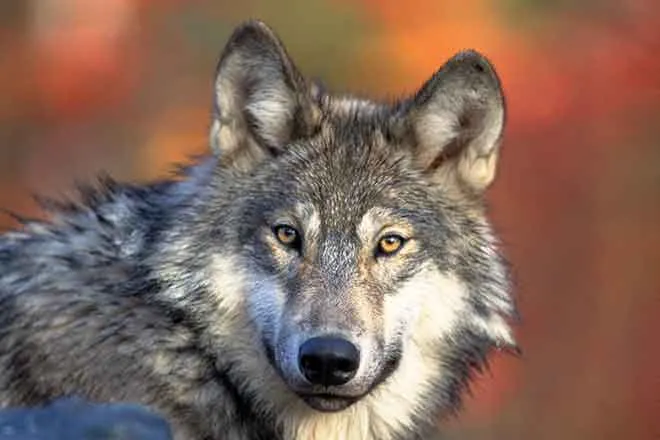
Bird flu’s spread from poultry to cattle to humans provokes worry among feds, states
(Colorado Newsline) Dairy farmers throughout the country are on guard and the federal government is mobilizing after an outbreak among cattle herds of highly pathogenic avian influenza — once thought to be confined to poultry flocks.
What’s more, the virus, also known as H5N1 or bird flu, was diagnosed in a third dairy farmworker last week, marking the first U.S. case with respiratory symptoms, said to be mild. The other two cases, also both mild, were diagnosed as pink eye.
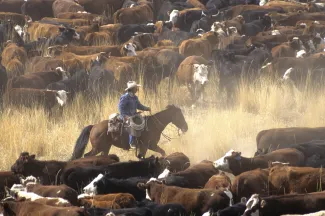
The notable leap from cows and chickens to humans is not yet ringing alarm bells for public health officials or veterinarians, who believe the risk to the public remains low. However, they are closely monitoring poultry and dairy farms for any changes, despite a reluctance among some dairy farmers to test their herds.
“Avian influenza is something that public health scientists are worried about,” said Marcus Plescia, chief medical officer for the Association of State and Territorial Health Officials. “It’s probably the potential infection or outbreak that causes the greatest amount of anxiety just because, if this did get into a place where it was easily transmissible among humans, everybody fears that could be a really, really bad scenario.”
The ongoing response has brought together a veritable alphabet soup of government agencies and agricultural organizations, highlighting the complicated nature of fighting bird flu. The mobilization is intended to stem the significant economic toll that farmers could face and curb the virus’ spread.
At the federal level, the Agriculture Department is responsible for the farm animals, the Centers for Disease Control and Prevention for human health, the Food and Drug Administration has jurisdiction over the eggs and milk sold in grocery stores, and the Administration for Strategic Preparedness and Response oversees its piece of the pie.
Then come the state agencies, interest groups, agribusiness and family farms.
As of last week, more than 40 people had been tested for H5N1 with more than 350 people enrolled in monitoring, about 220 of whom are in Michigan. Two of the human cases have been in Michigan while the other was diagnosed in Texas.
Michigan also has several dairy cattle herds diagnosed with H5N1.
The USDA has performed more than 17,000 PCR tests on cattle, with a total of 67 herds affected throughout nine states, including Colorado, Idaho, Kansas, Michigan, New Mexico, North Carolina, Ohio, South Dakota and Texas.
This strain of bird flu has also cropped up in a wide variety of mammals, including domestic cats. That’s led experts to recommend that people limit their pets’ interactions with wild birds, which hold a reservoir of the virus, as well as all farm animals.
Colorado state officials have set up a bird flu information website. It offers information on how to keep poultry protected and how to report sick or dead birds.
USDA begins expanded testing
The U.S. Department of Agriculture announced last week that it’s launching a voluntary pilot program to expand testing for dairy farms to gain better insight into the virus and make it easier for farmers to ship dairy cows across state lines.
The department is also transferring $824 million from the Commodity Credit Corporation to the Animal and Plant Health Inspection Service for the ongoing response.
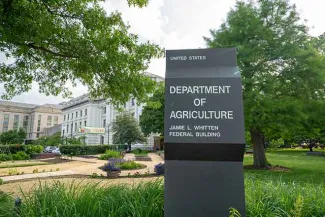
© iStock - Melissa Kopka
“It’s important to note that as these additional testing measures take place, USDA anticipates that we may see an increase in the number of herds that are testing positive,” said Eric Deeble, acting senior adviser for highly pathogenic avian influenza and deputy assistant secretary for congressional relations.
The pilot program will test milk samples from bulk tanks for H5N1. Farms that consistently test negative will “be able to ship their cows at the time they prefer and without testing individual animals, knowing that their entire herd is free of the disease,” Deeble said.
Agriculture Secretary Tom Vilsack, on a press call with reporters Monday, declined to say whether USDA has a full grasp of the extent of the virus’ spread in dairy cattle, but he said, “We have a pretty good understanding of the nature of this virus and essentially what’s causing its spread.”
“We’re trying to essentially corner this virus, so that over time it dissipates,” Vilsack said.
Dairy farmers can begin enrolling in the pilot program this week in participating states.
Dairy farms reluctant to test
Infected cows have tremendous amounts of the virus in their milk, so those that are lactating must test negative for the virus before they can be transported across state lines, the USDA has ordered.
In states such as Iowa, which has no detections of the virus in cattle, dairy farmers have been reluctant to test more than is required.
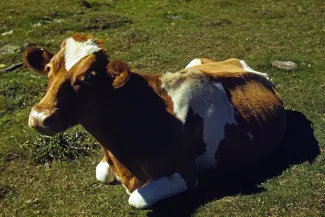
Guernsey Cattle. Courtesy FSA
“There has not been a lot of testing to date,” said Rodger Main, director of the Iowa State University Veterinary Diagnostic Laboratory, which first discovered bird flu was infecting cattle. “What’s being tested is the dairy cattle that are moving interstate.”
Scientists are sequencing the genetic code of an avian flu that was found in a flock of 4.2 million egg-laying hens last week in northwest Iowa to determine if it is the same variant that has been infecting cattle, said Don McDowell, a spokesperson for the Iowa Department of Agriculture and Land Stewardship. If so, it might indicate that there are infected cattle in Iowa.
A similar detection happened more than a month ago at a turkey flock in Minnesota, another state with no known dairy cattle infections.
However, no coordinated testing was done of dairy farms near the infected turkey flock to determine whether they had infected cattle and might have been the source of the transmission, said Michael Crusan, a spokesperson for the Minnesota Board of Animal Health.
“The Board of Animal Health didn’t collect any samples from dairy farms surrounding HPAI positive poultry premises,” Crusan said. “We do not have authority to test those dairy farms without suspected or confirmed illness reported to us.”
There is reluctance among some dairy farmers to voluntarily test their cattle for fear of what might happen if those tests reveal their herds are infected, said Dr. Barb Petersen, a Texas veterinarian who helped discover that bird flu was infecting cattle.
They might be afraid that they’ll be barred from selling their cattle for an unknown amount of time or that animal movements to and from their farms will be otherwise restricted.
Petersen suspects that nearly all the dairies in her area near Amarillo were infected but that many were not tested.
Infected cows typically recover in 10 to 14 days. Infected herds suffer a drop in milk production that can last about a month.
The virus is much more severe for chicken and turkey flocks, where it often causes fatal illness. Entire flocks are destroyed to prevent the spread of the virus.
More testing and better biosecurity measures are important to help prevent the virus from spreading from infected cattle to the poultry flocks, said Phillip Jardon, the dairy extension veterinarian for Iowa State University.
He is aware of several dairy farms that installed noise-making systems to keep away wild birds, which are believed to be an initial source of the infections. It’s unclear how many other state-recommended precautions are being adopted.
“The risk to dairies is not as large as it is to poultry, but dairies should keep in mind that they have neighbors who are poultry producers where it can be devastating, and they don’t want to have a local source of the virus,” he said.
Vilsack said USDA needs to better educate dairy farmers about the risks to their neighboring farmers to get more voluntary help in tracking and containing the virus.
It spread from Texas to faraway states through the transportation of infected cattle, but it has likely spread locally via farmworkers, veterinarians and equipment moving farm to farm, Vilsack said.
PPE for farmworkers
Plescia from the Association of State and Territorial Health Officials said during an interview with States Newsroom that while the risk to the public remains low, health officials are paying close attention to agricultural workers.
Ensuring farmworkers have access to personal protective equipment is essential, though it could be challenging to get all workers to use it during the hotter summer months, Plescia said.

(c) iStock - Yevhenil Orlov
The most recent case in a farmworker in Michigan, announced May 30, is more concerning to experts. “We’re much, much more worried about respiratory infections because it’s respiratory infections, where in the past with earlier versions of H5N1, we’ve seen that those infections can be very, very severe and the mortality can be very high,” Plescia said.
Public health officials need to work with farm owners and farmworkers to make sure that even people with mild symptoms get tested for avian flu to ensure that it isn’t circulating more widely than the documented cases, he said.
They need to ensure that undocumented workers or those on agricultural work visas who are concerned about interaction with the government are comfortable enough to get tested.
“When the state government starts showing up to do testing as far as they’re concerned, people are fearful of that and so they’ll stop coming to work,” Plescia said.
Plescia also cautioned that people shouldn’t drink raw milk for the foreseeable future.
Dr. Nirav Shah, principal deputy director of the Centers for Disease Control and Prevention, said in an interview with States Newsroom the agency is focusing its attention on farmworker safety through personal protective equipment, testing and additional resources.
The CDC is also working to build trust so that workers who might be in the U.S. on visas or who are undocumented feel comfortable getting tested for H5N1 or reporting an illness to public health officials.
“When H5 became a phenomenon in poultry farms, it took some time for poultry farm owners and poultry farmworkers to gain trust with the public health system,” Shah said. “The same thing, the same dynamic, is at play here.”
Shah, speaking during a separate press briefing on H5N1, said that even with the new respiratory case, there have been no signs, either genetically or epidemiologically, that this strain of avian influenza is adapting in a way that would lead to greater transmission.
“We are on the lookout for those changes, but the mere fact that this individual displayed some respiratory symptoms — again, we should be alert — but, in and of itself, is not a cause to change or suggest that we’re at an inflection point,” Shah said. “It is a cause and a reason to remain alert.”
Amira Roess, professor of global health and epidemiology at George Mason University, said in a written statement that public health officials must “provide incentives for individuals to report illness and to get tested, or at least we have to remove barriers.”
“Because we don’t have meaningful, high quality and accessible health care for the majority of our population, particularly those in rural areas where the virus has first spilled over, it will be challenging to get ahead of this,” Roess wrote in response to questions from States Newsroom about H5N1. “Many farmworkers are hourly workers and cannot afford to take time off for what they perceive as mild illness.”
Keep pets away from wild birds
Meghan Davis, associate professor in the Department of Environmental Health and Engineering at the Johns Hopkins Bloomberg School of Public Health, said in an interview with States Newsroom this particular strain of avian flu has been spreading between mammals, including domestic pets, and will likely continue to do so.
“The fact that this particular clade has been able to infect so many different mammalian species, and has now caused at least two documented cases in people — although, thankfully, with relatively mild symptoms — is a concern,” she said, before the third case was announced.

Bluetick Coonhound - wikimedia
Davis cautioned that because there have been cases among cats living on dairy farms that drank raw cow’s milk, people shouldn’t give raw milk to their pets.
Pet owners should also be cautious about letting their animals interact with wild birds, which are known to spread the virus.
Milk purchased in grocery stores is safe to drink since it’s been pasteurized and has been repeatedly tested by the U.S. Food and Drug Administration during the past few months to ensure there’s no active virus in the country’s food supply.
Other mammals diagnosed with avian flu this year include a mountain lion in Montana, red foxes in Michigan and Missouri, and a raccoon in Colorado. Domestic cats have been diagnosed in Michigan, Montana, New Mexico, Ohio, South Dakota and Texas, according to data from the CDC.
Davis said the surveillance system for H5N1 should be broadened to include “more systematic testing, which would require us to have somewhat better access to workers, to animals on farms, etc.” as well as antibody testing to determine if more people have contracted avian flu and recovered.
The additional information could help if the virus were to shift in the coming months or years.
“We don’t know exactly what this virus is going to do,” Davis said, noting the mild nature of the virus detected so far could mean that more people have contracted it and simply didn’t realize it.
Davis explained that public health officials and researchers need to closely monitor viruses like H5N1 since they can change in a way similar to how the flu changes, leading to the need for a different flu shot each year.
Roess, the epidemiology professor from George Mason University, noted that an uptick in human cases of avian influenza, could “be an indication of other types of transmission than what is currently believed.”
“Right now, the cases reported are a result of direct contact with infected food animals,” Roess said. “It is critical to ramp up surveillance of people working closely with possibly infected animals, other animals in the vicinity and other people who are not directly in contact with possibly infected animals in the community.
Colorado Newsline is part of States Newsroom, a nonprofit news network supported by grants and a coalition of donors as a 501c(3) public charity. Colorado Newsline maintains editorial independence. Contact Editor Quentin Young for questions: info@coloradonewsline.com. Follow Colorado Newsline on Facebook and Twitter.

